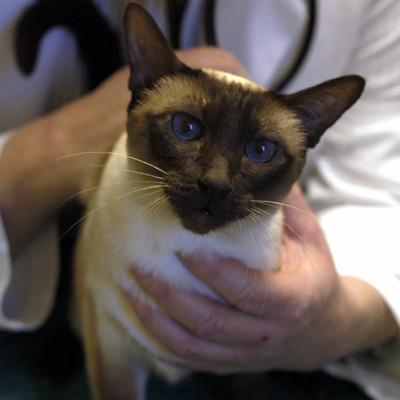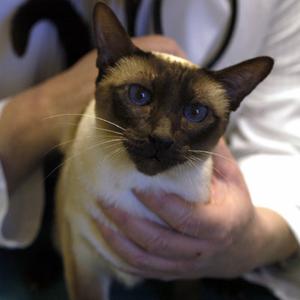Cancer in and around the mouth affects about 1 in 10 cats, making these some of the most common types of cancers in cats. Unfortunately, a high proportion of cat oral cancers are life-threatening, and survival times are short, even with therapy. Early detection of most cancer can improve outcomes and quality of life, and this is especially true of oral cancers in cats.
Signs of Oral Cancer
Cats are notorious for hiding signs of illness, so it's important that owners know about the common signs of oral cancer. Finding oral cancers in cats is not easy, since they often start in hard-to-see places like under the tongue or at the back of the mouth. However, certain signs often indicate oral cavity problems, including cancer.
-
 Bad breath (halitosis) - this is a common sign of oral cavity disease of any kind, and a sign that most cat owners can detect easily.
Bad breath (halitosis) - this is a common sign of oral cavity disease of any kind, and a sign that most cat owners can detect easily. - Drooling - some oral cancers make swallowing difficult, so saliva builds up in the mouth leading to drooling. As a species, cats don't drool much, so this can be an obvious sign a problem is developing.
- Difficulty chewing and swallowing - if you see your cat shifting food from one side of its mouth to the other, take several gulps to swallow his food, or drop food out of his mouth, this can be a signal that your cat has something painful in his mouth or something preventing normal chewing.
 Treatment of Oral Cancer
Treatment of Oral Cancer
Since almost all oral cancers of cats tend to be locally aggressive but don't spread to other parts of the body, currently available treatment options focus on controlling local disease. Surgery and radiation treatment are by far the most common methods used by veterinary oncologists to treat oral cancers in cats. Surgery can help "de-bulk" the cancer, improving quality of life. Radiation also can help decrease tumor size.
Studies underway today are looking at ways to improve treatment of oral cancer in cats so that veterinarians have more tools to treat this disease, and cats have a better shot at getting their full nine lives!
Prevention of Oral Cancer
Owners can take a couple steps to help minimize the risk of oral cancer development in their cats. First, reduce exposure to second-hand smoke which may increase risk of squamous cell carcinoma, the most common oral cancer in cats. Second, help your cat stay healthy with good oral hygiene, which studies show might play a role in keeping cats cancer free. Regular veterinary checkups and dental cleanings are essential to keeping your cat feeling frisky and healthy.
 Hope is on the Horizon
Hope is on the Horizon
Morris Animal Foundation is committed to finding new ways to treat oral cancers in cats. In the last five years, the foundation has invested nearly $650,000 in 6 studies focused on all aspects of cat oral cancers, from understanding basic cancer cell biology to exploring novel treatment options. The majority of studies are ongoing, but preliminary results are promising. Our hope is that by finding better ways to treat this deadly cancer, cats can live longer, healthier lives.
Although our knowledge and treatment of cancer have advanced dramatically during the last several decades, we still have a long way to go. Too many animals and people continue to develop cancer. Morris Animal Foundation is in the midst of our Unite to Fight Pet Cancer campaign to raise funds specifically for researching cancer for our animal family members. To learn more or make a gift, visit Morris Animal Foundation Unite to Fight Pet Cancer.





